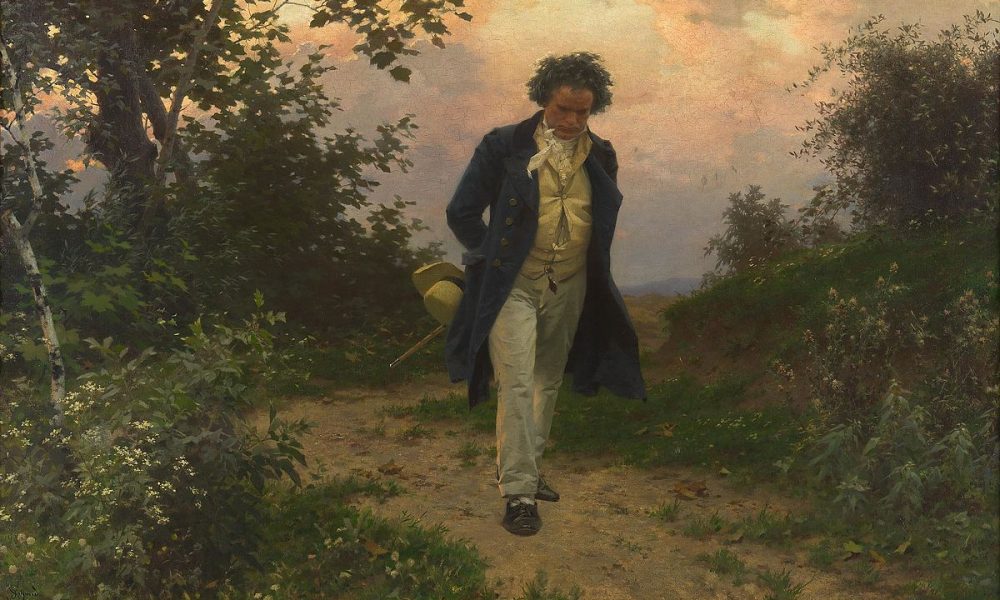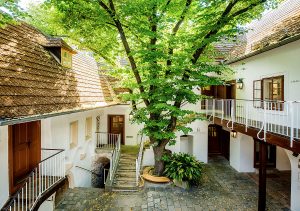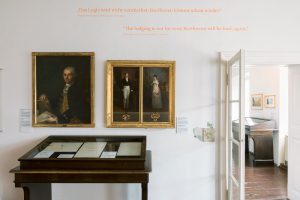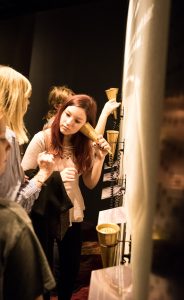Beethoven’s 250th Birthday

Vienna Commemorates its Honorary Citizen Ludwig van Beethoven
The fact that Ludwig van Beethoven is still regarded as a respected figure in Vienna is not only demonstrated by the special exhibitions on his 250th birthday. There are always numerous ways to meet the brilliant composer in Vienna.
Ludwig van Beethoven was born in Bonn in December 1770. The earliest official record is his baptism dated December 17th, 1770. His grandfather was the court conductor at the Cologne court and his father was a tenor singer at the court chapel. His musical career already began in the cradle, so to speak.
At the age of 7, Beethoven performed publicly for the first time as a pianist. At the age of 14 he received a job as organist and worked as a harpsichordist and violist at the court chapel. People said he was a “second Wolfang Amadeus Mozart”.
The study trips to Vienna became a permanent residence and he found numerous supporters here. In 1795, he performed a piano concerto for the first time. In the first 10 years in Vienna, he wrote 30 piano sonatas, including the well-known “Moonlight Sonata”. Later he expanded his repertoire to include string quartets and symphonies. The premiere of the 9th symphony in 1824 was one of his last great works, which he finished when he was completely deaf.
Beethoven Museum
The first place here is the Beethoven Museum in Heiligenstadt, in the 19th district of Vienna, where Beethoven lived for a long time. Back then, it was still “in the country”, but the surroundings are still very idyllic today. The museum has been lovingly restored and the 14 exhibition rooms have been modernized. The museum foolows the life of Beethoven after his move to Vienna. Among the many intersting items on display is his ear tube, which he used when he began to lose his hearing. Here, he wrote the famous, yet never sent letter, the “Heiligenstadt Testament” and composed, among other things, the Eroica Symphony.
Beethoven’s hearing was impaired very early on. The threat of deafness plunged him into severe personal crises, which he revealed in the so-called Heiligenstadt Testament in 1802. Initially, he still used the hearing tube for communication, but from 1818 onwards we have so-called conversation books, in which people he talked with wrote down what they wanted to say. Despite his hearing impairment, Beethoven had his most productive phase between 1802 and 1812, including the 3rd Symphony “Eroica”, the 5th Symphony “Fate Symphony”, piano and violin concerts and the opera “Fidelio”.
Pasqualatihaus
Another house Beethoven lived in can still be visited today. In the Pasqualatihaus on the Mölkerbastei he wrote his only opera “Fidelio”, some symphonies and the well-known piano piece “Für Elise”. The area around the Mölker Bastei is also worth seeing. Here you can find a piece of “old Vienna” and feel the spirit of the past.
Haus der Musik
Beethoven and his companions, predecessors and successors have long welcomed visitors in the Haus der Musik. In the Beethoven room you will find, among other things, a living mask and a death mask as well as display posters of his 68 apartments in Vienna, all rounded out with a Beethoven “Special” (March 11th to December 31st 2020).
There are also theatrical performances and children’s concerts and a Beethoven path with 15 stations that leads through the museum.
Collection of Old Musical Instruments – Weltenmuseum Wien
Two of Beethoven’s grand pianos and numerous original instruments of the time are exhibited in the rooms of the Weltmuseum Wien on Heldenplatz. The collection of old musical instruments contains the world’s most important inventory of Renaissance and Baroque instruments, largely from Habsburg property, as well as a collection of instruments played by famous personalities. The soundscape of the Viennese classical period, when Beethoven was living in Vienna, can be perfectly understood.
Beethoven “in Concert”
Of course, a composer’s birthday must also be honored musically. The Vienna Philharmonic is celebrating chamber music in the Gustav Mahler Hall of the Vienna State Opera, and the Vienna Symphony is celebrating with newly recorded symphonies in the Vienna Konzerthaus. The Musikverein is combining its own 150th birthday with the Beethoven year to host over 80 concerts and much more.
All of the exhibitions listed here are located in the 1st district of Vienna and can easily be reached by foot from all Schick Hotels. To reach the Beethoven Museum, take the U4 towards Heiligenstadt and then the bus 38A towards “Wien Leopoldsberg” to the station “Armbrustergasse”. From there, it is only a three-minute walk to the Beethoven Museum.
More on the special exhibitions in Beethoven year 2020 can be found in one of our previous blog articles.
Main picture: Julius Schmid portrait of Ludwig van Beethoven, 1901 © Wien Museum













